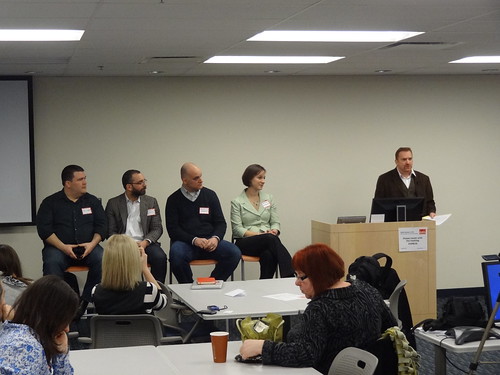A version of this post originally appeared on the Voce Nation Blog
In February, I attended Boston’s Social Media Breakfast 26: “The New Rules of Content Marketing.” Since much of what my colleagues and I at Voce Communications/Porter Novelli do centers on content, I figured I would hear a lot of interesting things, and I was not disappointed. Among the potential social media bingo games (claim your prize if you had “Infographic,” “engagement” and a Marshall McLuhan quote on your card) was a useful discussion of what content means in this world of the expanding notion of “publisher.” The panel, moderated by Social Media Breakfast’s own Robert Collins is listed here.
Here are some of my own takeaways:
First of All- None of These Rules are New
What is new are some of the channels involved, and the people making content may often be people who weren’t in that game (or, like me, had gotten out of the traditional media content game at some past point). So, are we really talking about new rules for content? No. What we are doing is indoctrinating new people into an expanded notion of the “content producer.”
Nobody Reads Long-Form Content
At one point, one of the panelists remarked that nobody reads white papers. I don’t believe this for a moment. It depends on the audience. In fact, when the question, stated more broadly about “long-form content,” was asked to the panel, CC Chapman, to his credit, said as much: “It depends.”
While digestible (ok, someone said it: “snackable”) content is often desirable to draw in audiences without taxing them, the notion that nobody wants long-form content because our attention spans are crippled in the Internet age is nonsense. Certainly, pundits said the same as radio, television, and other popular forms of entertainment came to be. The truth is, you may better serve your audience with long-form content such as whitepapers. The key questions to ask have to do with identifying your audience and matching them with your end goals for putting content out there.
Always Remember that “Infographic” Begins with “Info”
Speaking of taxing your audience, the headlong tumble into infographic-mania has made people like me grumpy. We have been assaulted by a new form of so-called infographic that neither imparts information nor is a particularly compelling graphic. Panelist Joe Chernov of Eloqua said it best when he admonished us to remember that “Infographic” begins with “Info.” He also quoted noted statistician Edward Tufte; “It doesn’t matter how cool your interface is, it would be better if there were less of it.”
How do you balance “less is more” and actually imparting something valuable? It’s a hard line to walk, and sometimes it’s just a judgment call. As a Boston guy, I’ll refer to my favorite recent infographic (which I have definitely posted here before, so apologies): the Boston Bruins’ bar tab at Foxwoods Casino after they won the NHL’s Stanley Cup last spring:
This infographic fits in one viewing screen, imparts the main thesis at a glance, and provides optional details which can be gleaned quickly through the visual, with “fine print” that is merely optional. Why can’t more (all?) infographics be more like this?
Zero Out the Brand in Content Marketing?
This topic follows along the ‘balance” theme I mentioned above. I’ll agree it is important not to be in “hard sell” mode all the time, turning off potential audience members through incessant hawking of your products and services. However, the notion of “zeroing out your brand” in content raised by the panel makes very little sense to me. In the end, you have goals, which probably involve driving leads, customers, and/or sales to your company. At some point you need to have that ask in there. Whether you are simply but obviously sponsoring “neutral” content or more pointedly laying out a point of view that leads to your company as solution but also espouses your founding values, there needs to be some value to you as well as the audience.
What Was Not Discussed?
Context. Part of the solution to the question of balance is in creating a context around every piece of content you publish, from a Tweet to a white paper and beyond. I wish context had been mentioned more in the panel, because it is important.
Context is what leads people to react in a certain way to your content. To some extent you can’t control your audience’s surroundings and mod at the time they consume your content. However, the more information you give them – say, repeating a link in a follow-up Tweet or response on a topic, or reframing the overall theme in each episode of a multi-part video series, the more successful your content. You have to make and remake context constantly. Even the most renowned content creators in the social media world screw this up from time time- that’s how hard it is.
It is hard– that’s why we keep bringing people together for events like this.

